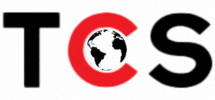ISO 22000 Food Safety
The production and supply of healthy and safe foods is the most basic and indispensable element of healthy nutrition. For this purpose, various control methods and approaches have been developed today by various groups including producers, processors, transporters, wholesale and retail sales organizations, academics and official authorities. In old approaches, it is seen that the measures taken to ensure safe food production were generally evaluated on the basis of controls on the final product. Control applications carried out on the final products show the existing errors and dangers in the final product.
Today, the need for an approach that controls the selection and evaluation of suppliers, acceptance to the business, production stages, final storage and shipment, starting from the production of raw materials, additives, other auxiliary substances and packaging materials for safe food production has emerged. HACCP (Hazard Analysis and Critical Control Points) System is one of these approaches. The relevant official bodies and national standard organizations of various countries have made important arrangements for the HACCP System and published standards. Although the emergence of the HACCP concept has a history of more than 30 years and the concept has international validity, a common and comprehensive standard that will be accepted worldwide for the HACCP System has not been established during this time.
ISO 22000 is the standard that defines the conditions to be applied and documented during the establishment of the Food Safety Management System, and there are also published guide standards, all of which are called the ISO 22000 series. There are many standards in the ISO 22000 series, and ISO/TS 22004 is the application guide of ISO 22000. The ISO 22000 Standard is not a standard that transfers the applications of ISO 9001 to the food industry, as some people claim. However, ISO 22000 is also ideal for establishing an integrated system compatible with ISO 9001 and ISO 14001, and is a food safety standard that completely covers the HACCP concept.
The basic approach of the ISO 22000 Standard is the implementation of a preventive system in organizations that is developed to prevent consumers from being exposed to foodborne diseases and that keeps all processes in the food chain under control together with all their effects such as infrastructure, personnel and equipment. Food Safety Management System applications in organizations cover production control, product control, equipment control; maintenance and general hygiene practices; personnel and visitor hygiene; transportation, storage, product information; training, supplier selection and evaluation; training, communication and similar issues.
The main goal is the system that determines the focal points of intolerable risks that may arise from process errors in the product, and that secures product quality and consumer health. Food safety inspections in product, design, production and quality control play a role in determining and resolving potential dangers. Basically, ISO 22000 plays a role in ensuring not only food safety but also sensory and nutritional quality, while also forming a fundamental and indispensable part of quality assurance in industrial production, service and service applications. In the Food Safety Management System, everyone is given responsibility during and after production, and good motivation is provided with more participation. In addition, resources are used more effectively, losses are reduced, efficiency is increased and the business can move towards a total quality system.
In the food industry, each unit must fulfill the conditions that will ensure food safety while under its own control. Prerequisite Programmes (PRPs) are programs that ensure that the Food Safety Management System is built on solid foundations. These conditions and applications, traditionally carried out within the framework of GMP, GHP, GLP, GAP and other similar concepts, are now accepted as prerequisites in the preparation and implementation of effective HACCP plans and in the production of safe food. Prerequisite programs ensure that basic environmental and production conditions in the production of safe food are taken under control. Some of the commonly used prerequisite programs can be listed as GMP, GHP, GAP.
What are the Benefits of ISO 22000 Food Safety Management System?
- Allows you to control the food safety hazard more effective and dynamic.
- Food-borne illnesses allows you to reduce.
- Customer loyalty and increase customer satisfaction.
- Provides control and systematic management of prerequisite programs.
- Issues such as the prevention of the return of the product provides with a significant decrease in quality.
- Promoting communication among all the links in the chain of the food industry, and the organization provides.
- Provides resource optimization and an increase in the competence of the staff is seen.
- Contributes to the improvement of the working environment.
- In the monitoring and improvement of the documentation provides convenience.
- Allows better planning.
- Allows you to minimize the issues that are encountered in official controls.
- Ensures compliance with laws.
- It contributes to proving to customers the care shown for food safety and increasing market share.
- As a supplier compliance and provides more effective marketing with other organizations in overseas markets in foreign markets.
- May increase the potential for economic growth and development.
Who Can Use/Apply the ISO 22000 Standard?
The ISO 22000 Food Safety Management System Standard can be used by all organizations directly or indirectly involved in the food chain, including:
- Farms, fisheries and dairies,
- Meat, fish and food processing facilities
- Bread, cereals, beverages, canned and frozen food manufacturers
- Restaurants, small kiosks, fast food chains, hospitals, hotels, and mobile food vendors,
- Food preservation and distribution companies, food processing equipment, food additives, food raw materials, packaging materials with companies that provide sterilization facilities.
In summary, every institution and organization that is involved in the food industry or has close or distant contact with this industry must partially or fully implement the demands of the ISO 22000 Standard.
